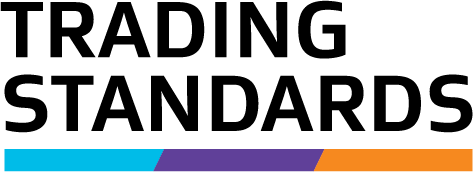TS–015 Using a weighing instrument as a reference instrument
This policy details the requirements to be followed when using a weighing instrument as a reference instrument for the purpose of verifying or inspecting another instrument.
Reference documents
N/A
Policy
The practicality of using a weighing instrument as a reference instrument is understood by Trading Standards and this policy outlines the procedures to be followed when using a weighing instrument to perform a verification or inspection test on another instrument, e.g. a mass flowmeter or belt weigher.
A full verification or inspection test is not required for the weighing instrument to be used as a reference instrument as long as the requirements of testing the reference instrument, as below, are met.
However, the requirements of testing the reference instrument, as below, may be incorporated into a verification or inspection test if required.
Criteria for the reference instrument
- The intrinsic error in the reference weighing instrument at any test load shall be no greater than 1/3 of the Maximum Permissible Error (MPE) allowed on the on Instrument Under Test (IUT) for that test load
- For testing belt weighers, use a weighing instrument where e ≤ 20 kg
- For testing a mass flowmeter, use a weighing instrument where e ≤ 20 kg; test loads shall be ≥ 5000 kg, for test load less than 5000 kg, a platform type weighing instrument must be used where the intrinsic error is ≤ 1/3 of MPE allowed on the IUT
- For testing other liquid measuring systems i.e. lube oil meters, a platform type weighing instrument must be used where the intrinsic weighing error is ≤ 1/3 of MPE allowed on the IUT
Testing the reference instrument
Time interval:
- the maximum time allowed between testing the weighing instrument and using it as a reference instrument is 28 days
Repeatability tests must be performed at:
- The minimum value tare weight, and
- the maximum value gross weight
- if the instrument passes the repeatability tests, any point between the minimum value tare weight and the maximum value gross weight ,it will be deemed to have passed the repeatability test
- repeatability testing can be done using an unknown load. The load must be within ± 10% of the tare or gross weights being used and must be stable for the duration of the test
- all readings are to be determined to 1/10th of the verification scale interval (e) of the weighing instrument using the formula P = I + 0.5e - ∆L
- the repeatability test load is applied 3 times, the variation between any two readings for a given test load may not be > 0.3 of the weighbridge verification scale interval (e)
Error tests:
- error tests of the weighing instrument will be performed at the lowest tare value , the largest gross value, and any other point where weight values are determined
- errors are to be determined to 1/10th of the verification scale interval (e) of the weighing instrument using the formula P = I + 0.5e - ∆L
- if the errors are determined by enabling expanded mode in the weighing instrument indicator, then the expanded mode must be proven as prescribed in Technical Policy TS-012 ; see Note below
Technical Policy TS-012 Using indicators in expanded or test mode on weighing instruments
Recording:
- all results of repeatability tests, error tests, and expanded mode test (if applicable) will be recorded on, or attached to, the test report for the instrument under test
Where an Accrecdited Person (AP) is reliant on another AP’s historical data on a weighing instrument:
- The inspecting AP must request the error results at pre-determined points where the weighing instrument will be used as a reference instrument for the determination of tare and gross weights
- Results from the weighing instrument test must have been determined to 1/10 of ‘e’ of the weighing instrument verification scale interval
- The errors recorded on the weighing instrument test results must be accounted for in assessing the performance of the instrument under test.
This policy must be read in conjunction with Trading Standards Technical Policy TS-006.
NOTE
On some indicators, accessing the expanded mode may increment the calibration event number in the indicator. If the calibration event number increments and then does not match the number recorded on the indicator, the instrument may be deemed to be unstamped and no longer be legal for trade use until a verification test is performed on it. To confirm whether or not this condition applies, refer to the conditions in the Certificate of Approval for the indicator.
Trade Measurement — Technical Policy
| Policy number: | TS - 015 |
|---|---|
| Effective date: | July 2016 |
| Version date: | December 2019 |
| Version number: | 2 |
| Policy name: | Using a weighing instrument as a reference instrument |
| Reviewed by: | Davis White, Legal Metrology Advisor and Senior Trading Standards Officer |
| Approved by: | Phil Sorrell, Team Leader Compliance and Inspection |
